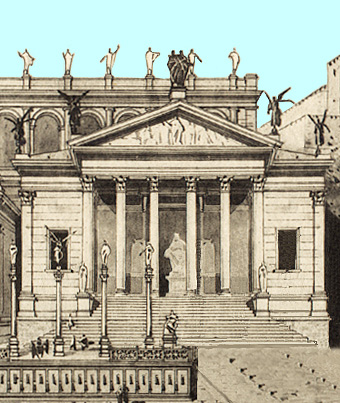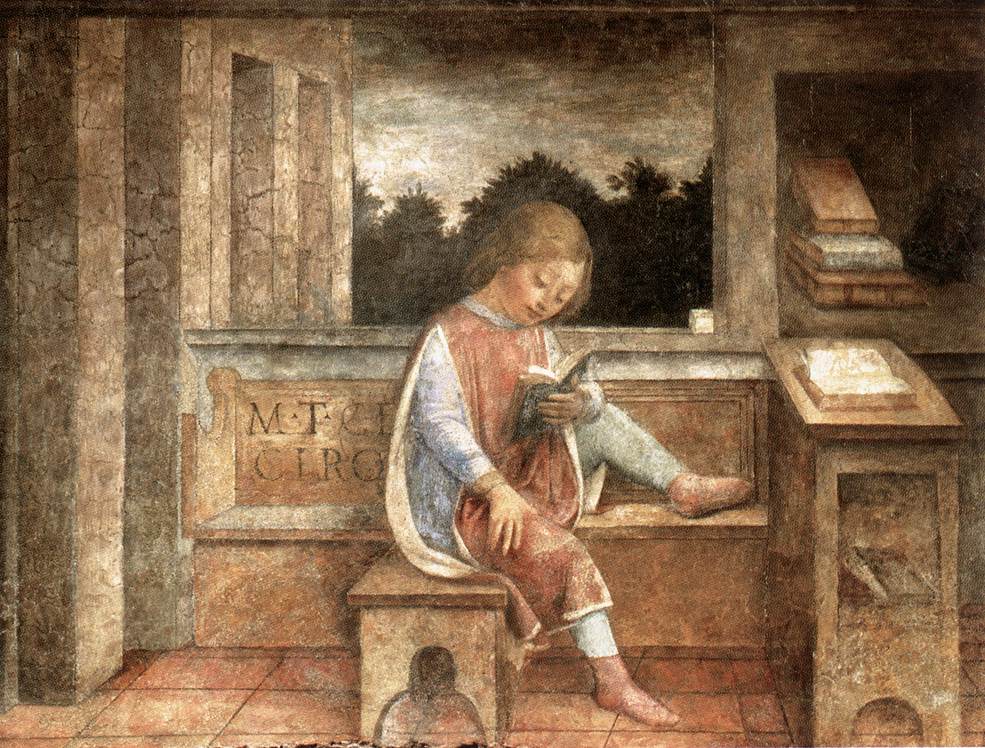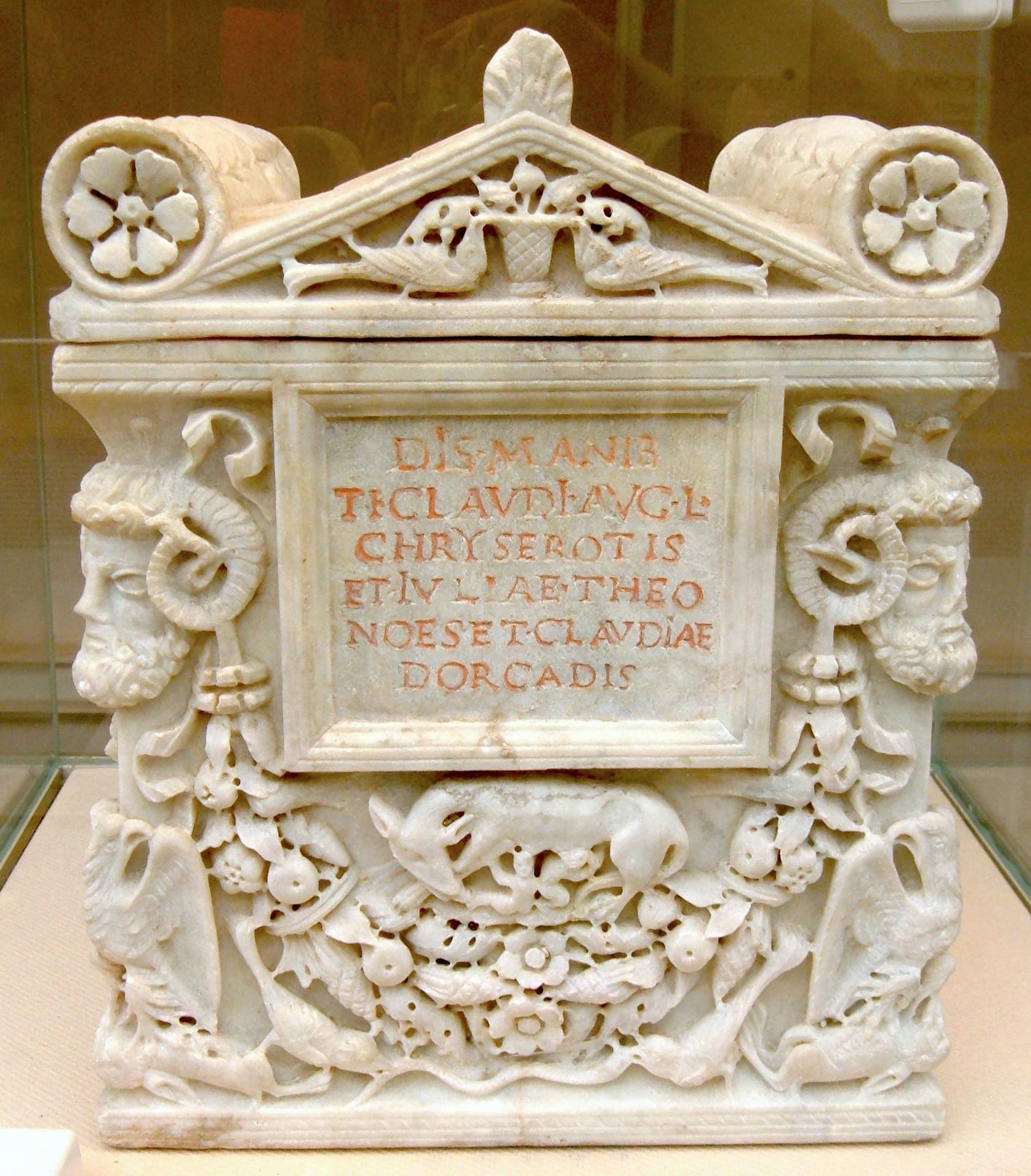 |
Temple Of Concord
The Temple of Concord ( la, Aedes Concordiae) in the ancient city of Rome refers to a series of shrines or temples dedicated to the Roman goddess Concordia, and erected at the western end of the Roman Forum. The earliest temple is believed to have been vowed by Marcus Furius Camillus in 367 BC, but it may not have been built until 218 BC by L. Manlius. The temple was rebuilt in 121 BC, and again by the future emperor Tiberius between 7 BC and AD 10. History One tradition ascribes the first Temple of Concord to a vow made by Camillus in 367 BC, on the occasion of the '' Lex Licinia Sextia'', the law passed by the tribunes Gaius Licinius Stolo and Lucius Sextius Lateranus, opening the consulship to the plebeians. The two had prevented the election of any magistrates for a period of several years, as part of the conflict of the orders. Nominated dictator to face an invasion of the Gauls, Camillus, encouraged by his fellow patrician Marcus Fabius Ambustus, Stolo' ... [...More Info...] [...Related Items...] OR: [Wikipedia] [Google] [Baidu] |
 |
Regio VIII Forum Romanum
The Regio VIII Forum Romanum Magnum is the eighth regio of imperial Rome, under Augustus's administrative reform. Regio VIII took its name from the Roman Forum, the political centre of Ancient Rome. Geographic extent and important features Regio VIII was the central region of Rome, both geographically and politically. In extent, the region was bordered by the Servian Wall to its northeast and the Palatine Hill to the southeast, while the western outcrop of the Quirinal Hill and the Via Sacra formed its eastern boundaries. It therefore included the Capitoline Hill, the valley between the Palatine and the Capitoline hills (where the Roman Forum is nestled), and the area between Velian Hill and the Palatine just before the point where the Arch of Titus straddles the Via Sacra. A measurement taken at the end of the 4th century recorded that the perimeter of the region was 13,067 Roman feet (approximately 3.86 km). The region was dominated by the massive sanctuary of Rom ... [...More Info...] [...Related Items...] OR: [Wikipedia] [Google] [Baidu] |
|
Conflict Of The Orders
The Conflict of the Orders, sometimes referred to as the Struggle of the Orders, was a political struggle between the plebeians (commoners) and patricians (aristocrats) of the ancient Roman Republic lasting from 500 BC to 287 BC in which the plebeians sought political equality with the patricians. It played a major role in the development of the Constitution of the Roman Republic. Shortly after the founding of the Republic, this conflict led to a secession from Rome by Plebeians to the Sacred Mount at a time of war. The result of this first secession was the creation of the office of plebeian tribune, and with it the first acquisition of real power by the plebeians. At first, only patricians were allowed to stand for election to political office, but over time these laws were revoked, and eventually all offices were opened to the plebeians. Since most individuals who were elected to political office were given membership in the Roman Senate, this development helped to transform ... [...More Info...] [...Related Items...] OR: [Wikipedia] [Google] [Baidu] |
|
 |
Cicero
Marcus Tullius Cicero ( ; ; 3 January 106 BC – 7 December 43 BC) was a Roman statesman, lawyer, scholar, philosopher, and academic skeptic, who tried to uphold optimate principles during the political crises that led to the establishment of the Roman Empire. His extensive writings include treatises on rhetoric, philosophy and politics, and he is considered one of Rome's greatest orators and prose stylists. He came from a wealthy municipal family of the Roman equestrian order, and served as consul in 63 BC. His influence on the Latin language was immense. He wrote more than three-quarters of extant Latin literature that is known to have existed in his lifetime, and it has been said that subsequent prose was either a reaction against or a return to his style, not only in Latin but in European languages up to the 19th century. Cicero introduced into Latin the arguments of the chief schools of Hellenistic philosophy and created a Latin philosophical voc ... [...More Info...] [...Related Items...] OR: [Wikipedia] [Google] [Baidu] |
 |
Appius Claudius Caecus
Appius Claudius Caecus ( 312–279 BC) was a statesman and writer from the Roman Republic. The first Roman public figure whose life can be traced with some historical certainty, Caecus was responsible for the building of Rome's first road (the Appian Way) and first aqueduct (the Aqua Appia), as well as instigating controversial popular-minded reforms. He is also credited with the authorship of a juristic treatise, a collection of moral essays, and several poems, making him one of Rome's earliest literary figures. A patrician of illustrious lineage, Caecus first came to prominence with his election to the position of censor in 312 BC, which he held for five years. During Caecus's time in office, aside from his building projects, he introduced several controversial but poorly-understood constitutional reforms: he increased the voting power of the poor and landless in the legislative assemblies, and admitted lower-class citizens to the Roman Senate, though these measures were ... [...More Info...] [...Related Items...] OR: [Wikipedia] [Google] [Baidu] |
|
Scriba (ancient Rome)
In ancient Rome, the ''scriba'' (Latin, plural ''scribae'') was a public notary or clerk (see also scrivener). The public scribes were the highest in rank of the four prestigious occupational grades (''decuriae'') among the '' apparitores'', the attendants of the magistrates who were paid from the state treasury. The word ''scriba'' might also refer to a man who was a private secretary, but should be distinguished from a copyist (who might be called a "scribe" in English) or bookseller (''librarius''). In Rome the ''scribae'' worked out of the ''aerarium'', the state treasury and government archive. They received a good salary, but could earn additional commissions for collecting and recording state revenues, and making official copies of government documents and decrees. The Roman posting was such a lucrative assignment that the ''scribae'' worked in rotations, serving one year in Rome and two in the provinces. Those who became scribes might be freedmen (''libertini'') and their ... [...More Info...] [...Related Items...] OR: [Wikipedia] [Google] [Baidu] |
|
 |
Freedman
A freedman or freedwoman is a formerly enslaved person who has been released from slavery, usually by legal means. Historically, enslaved people were freed by manumission (granted freedom by their captor-owners), emancipation (granted freedom as part of a larger group), or self-purchase. A fugitive slave is a person who escaped enslavement by fleeing. Ancient Rome Rome differed from Greek city-states in allowing freed slaves to become plebeian citizens. The act of freeing a slave was called ''manumissio'', from ''manus'', "hand" (in the sense of holding or possessing something), and ''missio'', the act of releasing. After manumission, a slave who had belonged to a Roman citizen enjoyed not only passive freedom from ownership, but active political freedom ''(libertas)'', including the right to vote. A slave who had acquired ''libertas'' was known as a ''libertus'' ("freed person", feminine ''liberta'') in relation to his former master, who was called his or her patron ... [...More Info...] [...Related Items...] OR: [Wikipedia] [Google] [Baidu] |
 |
Roman Senate
The Roman Senate ( la, Senātus Rōmānus) was a governing and advisory assembly in ancient Rome. It was one of the most enduring institutions in Roman history, being established in the first days of the city of Rome (traditionally founded in 753 BC). It survived the overthrow of the Roman monarchy in 509 BC; the fall of the Roman Republic in the 1st century BC; the division of the Roman Empire in AD 395; and the fall of the Western Roman Empire in 476; Justinian's attempted reconquest of the west in the 6th century, and lasted well into the Eastern Roman Empire's history. During the days of the Roman Kingdom, most of the time the Senate was little more than an advisory council to the king, but it also elected new Roman kings. The last king of Rome, Lucius Tarquinius Superbus, was overthrown following a coup d'état led by Lucius Junius Brutus, who founded the Roman Republic. During the early Republic, the Senate was politically weak, while the various executive magistr ... [...More Info...] [...Related Items...] OR: [Wikipedia] [Google] [Baidu] |
|
Aedile
''Aedile'' ( ; la, aedīlis , from , "temple edifice") was an elected office of the Roman Republic. Based in Rome, the aediles were responsible for maintenance of public buildings () and regulation of public festivals. They also had powers to enforce public order and duties to ensure the city of Rome was well supplied and its civil infrastructure well maintained, akin to modern local government. There were two pairs of aediles: the first were the "plebeian aediles" (Latin ''aediles plebis'') and possession of this office was limited to plebeians; the other two were "curule aediles" (Latin ''aediles curules''), open to both plebeians and patricians, in alternating years. An ''aedilis curulis'' was classified as a ''magister curulis''. The office of the aedilis was generally held by young men intending to follow the ''cursus honorum'' to high political office, traditionally after their quaestorship but before their praetorship. It was not a compulsory part of the cursus, and hence ... [...More Info...] [...Related Items...] OR: [Wikipedia] [Google] [Baidu] |
|
 |
Vulcan (mythology)
Vulcan ( la, Vulcanus, in archaically retained spelling also ''Volcanus'', both pronounced ) is the god of fire including the fire of volcanoes, deserts, metalworking and the forge in ancient Roman religion and myth. He is often depicted with a blacksmith's hammer. The Vulcanalia was the annual festival held August 23 in his honor. His Greek counterpart is Hephaestus, the god of fire and smithery. In Etruscan religion, he is identified with Sethlans. Vulcan belongs to the most ancient stage of Roman religion: Varro, the ancient Roman scholar and writer, citing the Annales Maximi, records that king Titus Tatius dedicated altars to a series of deities including Vulcan. Etymology The origin of the name is unclear. Roman tradition maintained that it was related to Latin words connected to lightning (), which in turn was thought of as related to flames. This interpretation is supported by Walter William Skeat in his etymological dictionary as meaning ''lustre''. It ha ... [...More Info...] [...Related Items...] OR: [Wikipedia] [Google] [Baidu] |
 |
Livy
Titus Livius (; 59 BC – AD 17), known in English as Livy ( ), was a Roman historian. He wrote a monumental history of Rome and the Roman people, titled , covering the period from the earliest legends of Rome before the traditional founding in 753 BC through the reign of Augustus in Livy's own lifetime. He was on familiar terms with members of the Julio-Claudian dynasty and a friend of Augustus, whose young grandnephew, the future emperor Claudius, he exhorted to take up the writing of history. Life Livy was born in Patavium in northern Italy, now modern Padua, probably in 59 BC. At the time of his birth, his home city of Patavium was the second wealthiest on the Italian peninsula, and the largest in the province of Cisalpine Gaul (northern Italy). Cisalpine Gaul was merged in Italy proper during his lifetime and its inhabitants were given Roman citizenship by Julius Caesar. In his works, Livy often expressed his deep affection and pride for Patavium, and the city was we ... [...More Info...] [...Related Items...] OR: [Wikipedia] [Google] [Baidu] |
|
Marcus Fabius Ambustus (consular Tribune 381 BC)
Marcus Fabius Ambustus was a consular tribune of the Roman Republic in 381 BC, and a censor in 363. He was the son of Caeso Fabius Ambustus, and the father of two daughters, the elder of whom married Servius Sulpicius Praetextatus, and the younger Gaius Licinius Stolo, one of the authors of the ''Lex Licinia Sextia''. The Fabii were patricians. The younger Fabia had married a plebeian, and according to Livy, persuaded her father to support the legislation that would open of the consulship to plebeians and hence her husband. As consular tribune a second time in 369, Ambustus took an active part in passing the ''Lex Licinia Sextia''.Livy, ''Ab Urbe Condita'' vi. 36 See also * Ambustus, for other men with the same ''cognomen'' * Fabius Ambustus, for other men who used the same combination of ''gens In ancient Rome, a gens ( or , ; plural: ''gentes'' ) was a family consisting of individuals who shared the same nomen and who claimed descent from a common ancestor. A branch ... [...More Info...] [...Related Items...] OR: [Wikipedia] [Google] [Baidu] |